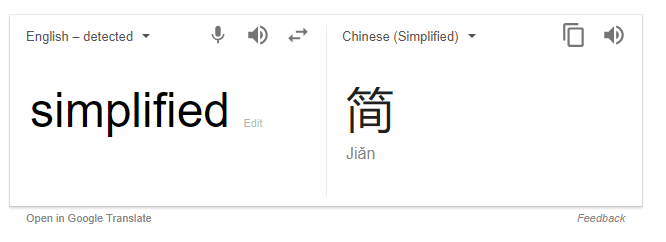Who uses Simplified Chinese Characters?

In an earlier post, I discussed the difference between traditional Chinese characters and the simplified versions. What I didn’t address in that post, is who uses which, and (importantly) which is best to learn.
The answer to this question is changing over time.
Adherents to traditional characters point out how much richer many of the characters are. Ironically though, there are characters that started more simplified, but which became more complex over time, and the current simplified character is closer to the historical one.
While the note on richness is very true, it’s important to keep in mind why the simplified ones were created in the first place.
Many in Western countries will still see a lot of traditional Chinese characters displayed on signs, etc. This is for a number of reasons. One is that the calligraphy involved is a significant art form. But the other is that in the past, most of the Chinese diaspora (overseas Chinese) were from Hong Kong and Taiwan ie: regions where people readily traveled overseas in the past. Both these regions, along with Macau, still mostly use traditional characters.
Researchers in Taiwan point out the irony in simplification being introduced to assist literacy, yet the Taiwan region has a much higher than average literacy despite using traditional characters. Others question the measurement of literacy on the mainland, and many other studies however, have shown how much easier simplified characters are to learn, contrary to cultural biases.
It’s interesting that other overseas Chinese communities like those in Singapore, Malaysia, etc. have already switched to using simplified characters. Painful as it might be for some (and it is painful and seen as an assault on cultural identity by many), I see it only as a matter of time before the vast majority use simplified characters. You can find more on the debate here.
My take on this (and I’m sure many will disagree) is that you have to look at what the Chinese government is pushing. One thing they are very big on is standardization.
With such a gigantic population, there is no other option.
And they’ve said that simplified characters are where they are now, and also where they are heading.
Now that’s somewhat painful and confronting for those who grew up using traditional characters, but I see it as simple (no pun intended) reality.
One real challenge for this though, is that while the community might change over time, historical Chinese writing isn’t going to. To read older documents, you will need to be able to read traditional characters. History is important, and even more so to the Chinese. It’s common to hear:
中国已经有五千多年的历史。 (Zhōngguó yǐjīng yǒu wǔqiān duō nián de lìshǐ.)
This means “China already has more than 5000 years of history”. While this is a claim that’s often disputed, it is one of the items of pride you will hear Chinese people commenting on. They’ll ask “how many years of history does your country have?” and proudly commenting on the comparison.
While the ability to read historical documents is important, most English-speaking people today would struggle to read English that was written more than a few hundred years ago anyway.
Today, I’d suggest learning simplified characters, and over time, picking up traditional characters that you need, as you come across them. Even in the regions that currently use mostly traditional characters, I’m sure that when people need to work or deal with the government, business, etc. that it will be increasingly done using simplified characters. My guess is that within a few generations, the move will be pretty much complete.
2018-08-11
